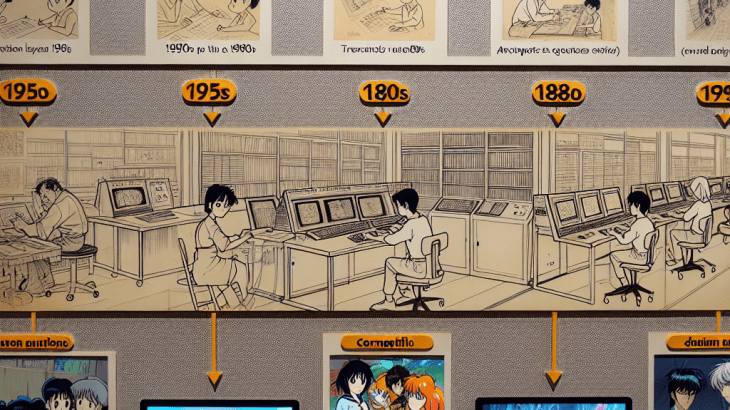The Evolution of Anime: From Hand-drawn to Digital Animation
Anime, with its vibrant characters and compelling narratives, has won the hearts of millions worldwide. Over the decades, the style and techniques of anime production have undergone significant transformations. From painstakingly hand-drawn frames to advanced digital animation, the journey of anime’s evolution is a fascinating one. Let’s dive into this artistic metamorphosis!
The Early Years: Hand-drawn Beginnings
The roots of anime can be traced back to the early 20th century. During this period, animation was a labor-intensive process, crafted by the skilled hands of dedicated artists. The frames were meticulously drawn by hand, with each sequence requiring countless hours to complete.
- 1923: The release of Namakura Gatana by Jun’ichi Kōuchi marked one of the early milestones in Japanese animation.
- The 1960s: The arrival of globally renowned series like Astro Boy, created by Osamu Tezuka, brought anime into the spotlight.
These classic series, despite their simplistic animation by today’s standards, laid the groundwork for the narrative depth and unique style that anime is known for.
The Rise of Cell Animation
By the 1970s and 1980s, cell animation became the dominant technique in anime production. This method involved painting characters and objects on transparent celluloid sheets, which were then layered over static backgrounds. This technique allowed for greater movement fluidity and more complex scenes.
During this period, anime masterpieces like Mobile Suit Gundam and Akira were born. These works not only showcased the sheer artistic talent involved but also pushed the boundaries of storytelling and visual effects.
The Digital Revolution: A New Era of Animation
The 1990s and early 2000s witnessed a seismic shift in the world of anime, as studios began to embrace digital technology. Computers offered a new suite of tools that made the animation process faster, more efficient, and often more spectacular.
- Digital Painting: Artists transitioned from celluloid sheets to digital tablets, allowing for more intricate and vibrant color schemes.
- 3D Animation: Integration of 3D models within 2D environments added depth and dynamism to scenes.
- Software Advancements: Programs like Adobe After Effects and Toon Boom revolutionized special effects and compositing.
An iconic example of this era is Spirited Away, directed by Hayao Miyazaki. The film seamlessly blended hand-drawn and digital techniques, captivating audiences with its breathtaking visuals and enchanting story.
Modern Anime: Pushing the Limits of Technology
In recent years, anime studios have continued to innovate, leveraging cutting-edge technology to produce stunning works. The integration of Artificial Intelligence (AI) and machine learning is transforming animation workflows, making it even easier to create high-quality content.
- Hybrid Techniques: Many modern anime integrate both hand-drawn and digital elements, preserving the traditional anime aesthetic while harnessing the power of digital tools.
- Virtual Reality (VR): Some studios are experimenting with VR experiences that allow fans to immerse themselves in anime worlds like never before.
Series like Attack on Titan and Demon Slayer exemplify how contemporary anime blends beautiful artistry with advanced technology to deliver thrilling, immersive experiences.
The Future of Anime: Endless Possibilities
The evolution of anime is far from over. As technology continues to advance, we can anticipate even more groundbreaking developments in the industry. With innovations like augmented reality (AR) and new AI-driven animation techniques on the horizon, the future of anime promises to be brighter and more adventurous than ever before.
In conclusion, the journey from hand-drawn frames to digital animation in anime reflects not only technological progression but also the enduring spirit of creativity and innovation. Whether you’re a long-time fan or a newcomer, one thing is clear: anime will continue to inspire and amaze for generations to come.
Stay tuned as we embark on this ever-evolving adventure, and don’t forget to share your favorite anime moments and innovations in the comments below!
